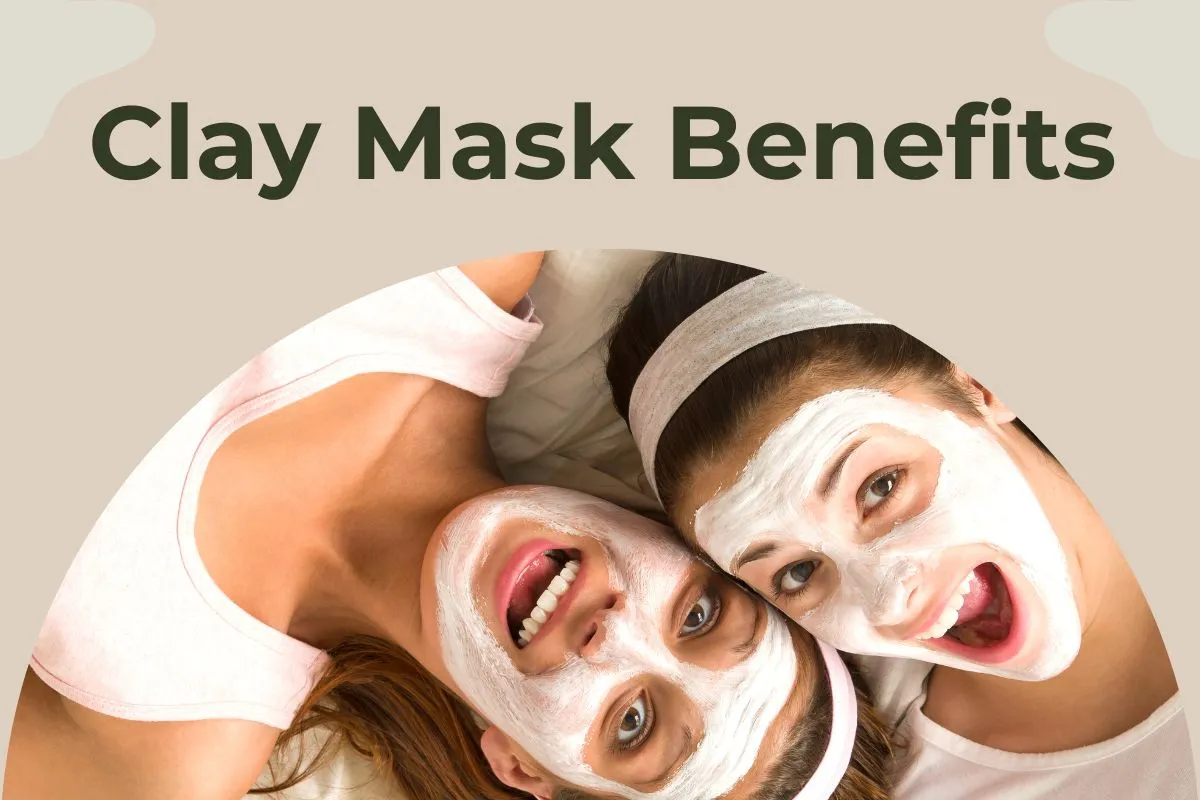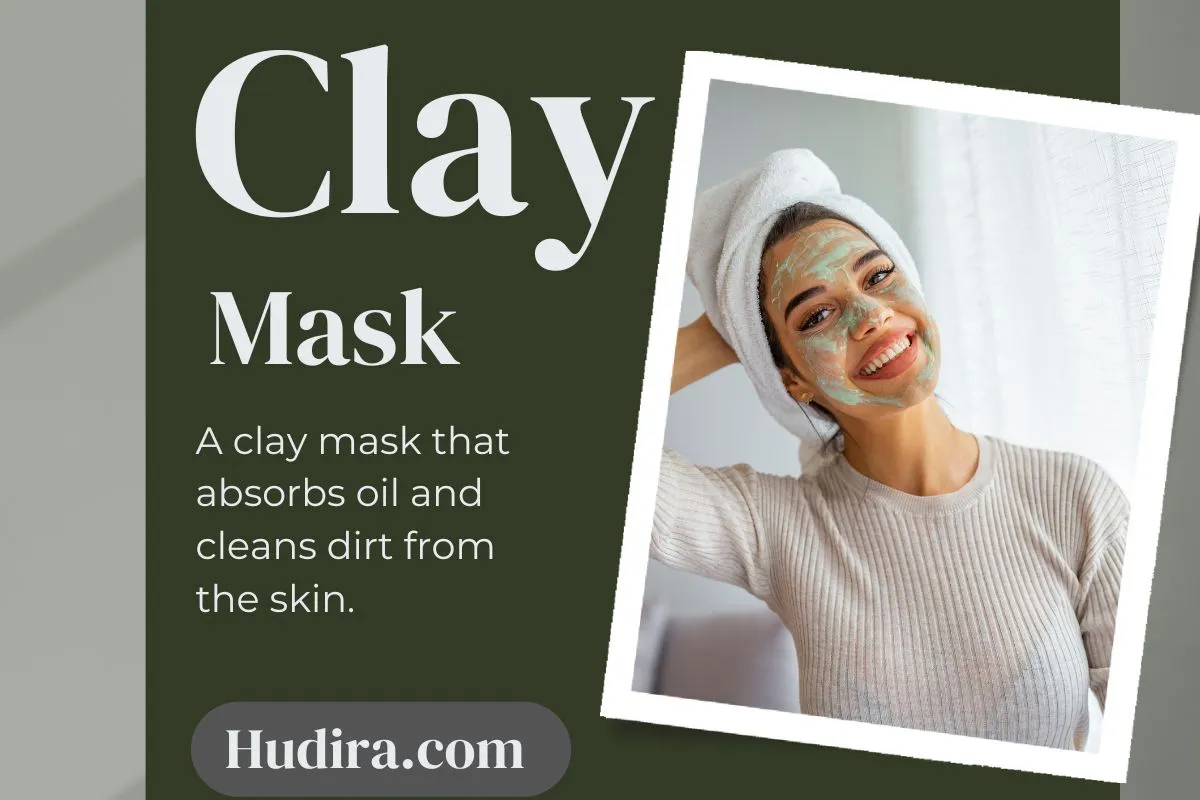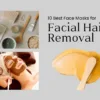No products in the cart.

When it comes to skincare rituals that have stood the test of time, clay mask benefits remain unmatched. From ancient beauty queens to modern-day skincare enthusiasts, clay has been a trusted ally for glowing, refreshed, and balanced skin. Packed with natural minerals, these masks work gently yet effectively to cleanse, detoxify, and rejuvenate. Whether you’re looking to reduce excess oil, soothe irritation, or simply indulge in a spa-like experience at home, a clay facial can deliver transformative results without harsh chemicals.
But here’s the secret most beauty blogs overlook: not all clays are created equal, and the real magic happens when you combine the right type of clay with powerful herbs. Imagine a bentonite clay face mask infused with soothing rose water, brightening turmeric, or calming aloe vera. The results? Skin that looks and feels alive. In this guide, you’ll uncover what clay masks do, the unique benefits of different clays, and expert application tips to maximize results. Ready to elevate your clay for face game? Let’s dive in.
What Are Clay-Based Herbal Masks?
Clay-based herbal masks are skincare treatments made from natural clay combined with plant-based extracts, oils, or hydrosols. While clays like bentonite, kaolin, French green, rhassoul, and Multani Mitti have individual benefits, blending them with herbs enhances their effect.
- Clay for face treatments work by drawing out impurities, absorbing excess oil, and delivering minerals that nourish the skin.
- Herbal additions such as licorice, neem, turmeric, or aloe vera address specific skin concerns like pigmentation, acne, and dryness.
- The synergy between clay and herbs allows you to get deep-cleansing benefits without over-drying your skin.
Clay Mask Benefits: Why Your Skin Will Thank You
1. Deep Pore Cleansing
One of the main clay mask benefits is its natural detoxifying power. Clay works like a magnet, drawing out dirt, makeup residue, and environmental pollutants from your pores. This deep cleansing helps prevent clogged pores and reduces the risk of breakouts.
2. Oil and Sebum Control
A bentonite clay face mask is especially effective for oily and acne-prone skin. It absorbs excess oil while maintaining skin balance and no tight, over-dry feeling after use.
3. Gentle Exfoliation
Unlike abrasive scrubs, a clay facial removes dead skin cells through a mild lifting action. Over time, your skin feels smoother, looks brighter, and reflects light better.
4. Improved Circulation and Glow
As a face mask clay dries, it stimulates microcirculation. This can lead to a temporary plumping effect and a natural post-mask glow.
5. Herbal Synergy
Pairing clay with herbal extracts amplifies results. For example:
- Bentonite + neem = acne support
- Kaolin + aloe vera = calming sensitive skin
- Multani Mitti + turmeric = brightening dull complexions
Types of Clay for Face and Their Benefits
| Clay Type | Best For | Unique Benefits |
| Bentonite | Oily/acne-prone skin | Strong oil absorption, detoxifying, reduces breakouts |
| Kaolin (White Clay) | Sensitive/dry skin | Gentle cleansing, mild exfoliation, soothing |
| French Green Clay | Combination/congested skin | Mineral-rich, revitalizing, pore-tightening |
| Multani Mitti (Fuller’s Earth) | Dull skin/pigmentation | Brightening, cooling, improves uneven tone |
| Rhassoul Clay | All skin types | Improves elasticity, nourishes with magnesium and silica |
Each type of clay for face offers its own texture, pH, and absorbency level which is why personalizing your mask is key to maximizing clay mask benefits.
What Do Clay Masks Do on a Skin Level?
- It binds to toxins and oils in your pores – Clay’s negatively charged particles attract and bind to positively charged impurities, sebum, and pollutants trapped in your pores, effectively lifting them out without harsh scrubbing. This deep-cleansing action leaves your skin feeling fresher and looking clearer.
- Pulls impurities toward the surface – As the mask begins to set, it gently draws dirt, bacteria, and debris to the skin’s surface, helping to unclog pores. This process can also accelerate the skin’s natural detox cycle, reducing the chance of breakouts.
- Encourages gentle exfoliation – When rinsed off, clay removes dead skin cells that can make your complexion look dull. This mild exfoliation reveals softer, smoother skin without the micro-tears caused by abrasive scrubs.
- Boosts skin circulation, giving you that healthy glow – The tightening effect of clay slightly stimulates blood flow to the surface, delivering more oxygen and nutrients to your skin cells. This temporary boost can leave your complexion looking revitalized and radiant.
Application Tips for Maximum Clay Mask Benefits
- Start with a Clean Canvas – Cleansing beforehand ensures that makeup, dirt, and excess oil won’t block the clay’s ability to absorb impurities. This maximizes the effectiveness of your mask.
- Choose the Right Liquid – The mixing medium can enhance the mask’s benefits. Rose water helps balance pH, aloe vera juice adds hydration, and green tea brings antioxidant protection to your clay facial.
- Mix to a smooth paste – Blend the clay until lump-free for an even application. With bentonite clay, avoid metal utensils since they can reduce its electrostatic charge, lessening its detox power.
- Apply Evenly – Use a brush or clean fingers to spread a thin, consistent layer over your face, avoiding delicate areas like the eyes and lips for comfort and safety.
- Keep it Damp – Lightly mist the mask with water or hydrosol if it starts to crack. A slightly moist clay continues to pull impurities without over-drying your skin.
- Rinse Gently – Remove with lukewarm water, using soft circular motions to enhance exfoliation. A microfiber cloth can help, but avoid aggressive rubbing.
- Moisturize After – Follow up with a hydrating cream or oil to replenish moisture and seal in the clay mask benefits you’ve just unlocked.
Herbal Add-Ons for Targeted Results
- Acne Control – Combining a bentonite clay face mask with neem powder and tea tree hydrosol delivers a triple-action solution: detox from the clay, antibacterial power from neem, and soothing yet clarifying effects from tea tree.
- Brightening – Multani Mitti paired with turmeric and licorice root extract targets uneven skin tone. Turmeric brings antioxidant and anti-inflammatory properties, while licorice gently fades discoloration for a more luminous complexion.
- Soothing Sensitive Skin – Kaolin clay’s mild cleansing ability is complemented by chamomile tea’s calming nature and aloe vera’s cooling hydration, making this blend ideal for redness-prone or reactive skin.
- Anti-Pollution Detox – French green clay removes urban pollutants while peppermint hydrosol refreshes and revitalizes, leaving the skin clean and energized after exposure to smog and dust.
Safety and Precautions
- Always patch test new blends before full application – This helps detect any potential allergic reaction or sensitivity to new clays or herbs before applying them to your whole face.
- Limit clay facial use to 1–2 times weekly – Overuse can strip the skin’s natural oils, leading to dryness or increased sensitivity, so moderation is key for long-term skin health.
- Avoid leaving bentonite clay face mask on until fully dry – Allowing it to harden completely can draw out too much moisture, causing tightness, flaking, or irritation.
- Buy clay from reputable suppliers to avoid contamination with heavy metals – High-quality sourcing ensures your clay is pure, safe, and free from harmful substances like lead, which have been found in poorly processed clays.The soothing ritual of masking your skin will love you for it.
The Ritual of Clay Masking
Incorporating a face mask clay into your weekly skincare routine is more than just a treatment, it’s a ritual. Taking 10–15 minutes for yourself allows both your skin and mind to reset. As the clay draws out impurities, you can use the time to relax, meditate, or simply enjoy the sensory experience of herbal aromas.
Conclusion
From deep cleansing and oil control to herbal synergy and radiant glow, the clay mask benefits you can achieve at home are both immediate and long-lasting. Whether you prefer the detox power of a bentonite clay face mask, the gentle touch of kaolin, or the brightening effect of Multani Mitti, there’s a perfect clay for face out there for you. Paired with the right herbs and proper application, this timeless skincare ritual can transform your complexion naturally and beautifully.
FAQs
Q. How often should I use a clay facial?
1–2 times per week is ideal for most skin types.
Q. Can I mix clay masks with essential oils?
Yes, but dilute properly and patch test first.
Q. Is a bentonite clay face mask good for sensitive skin?
Bentonite is better for oily skin; kaolin or rhassoul are gentler.
Q. What do clay masks do for acne?
They absorb excess oil, reduce impurities, and calm inflammation.
Q. Can I leave a face mask clay overnight?
No, it can over-dry and irritate skin — rinse after 10–15 minutes.




Add comment